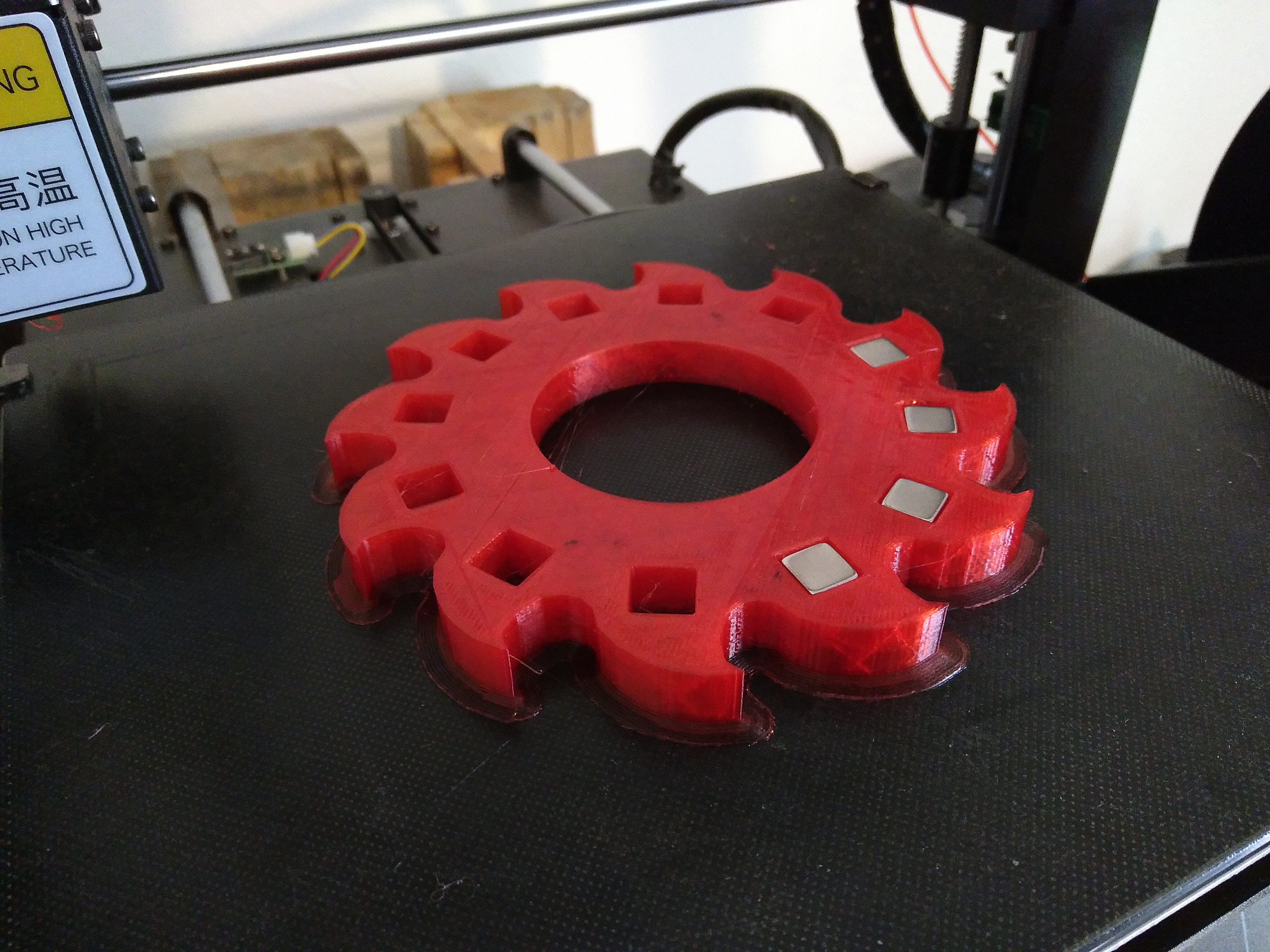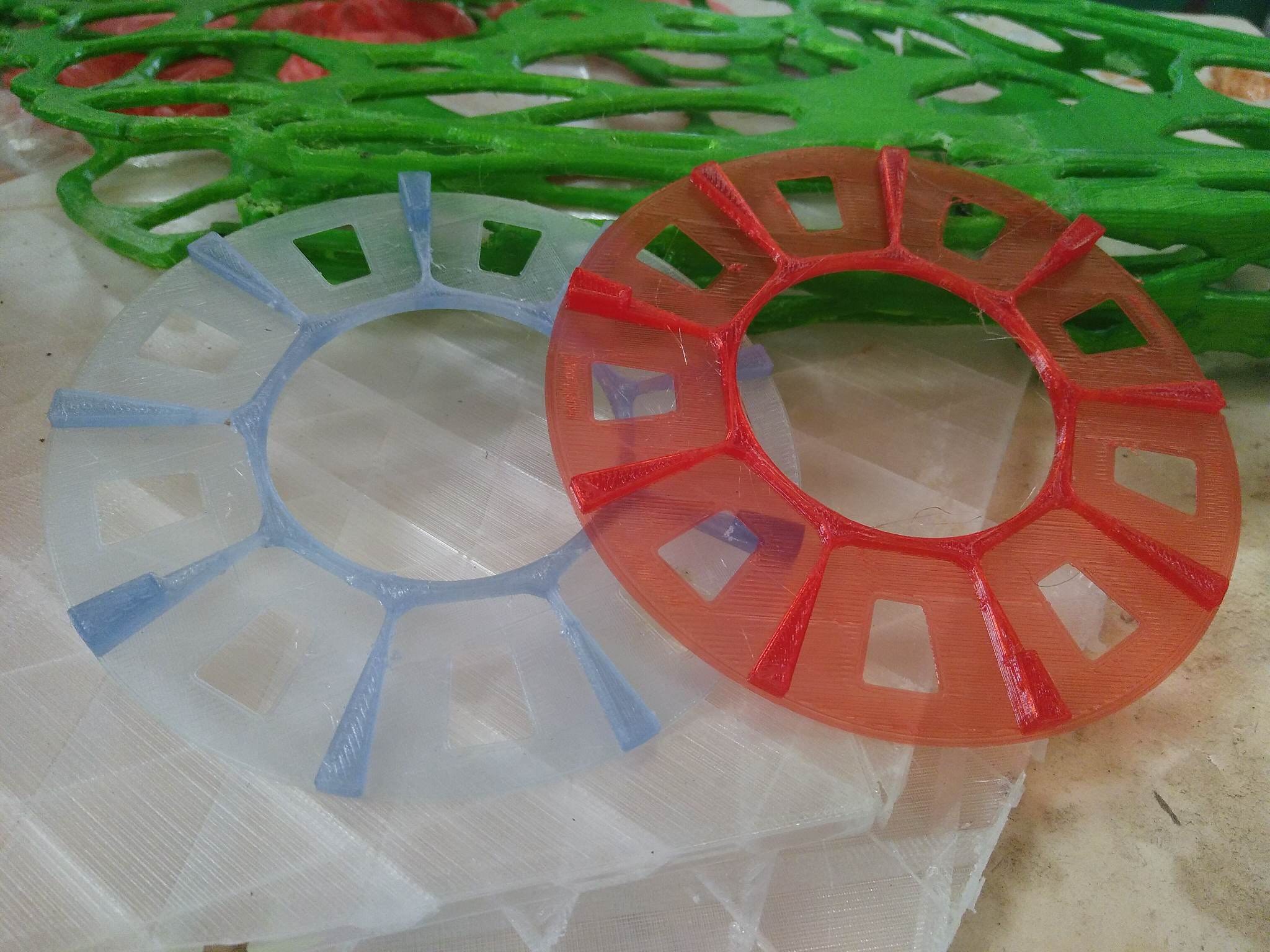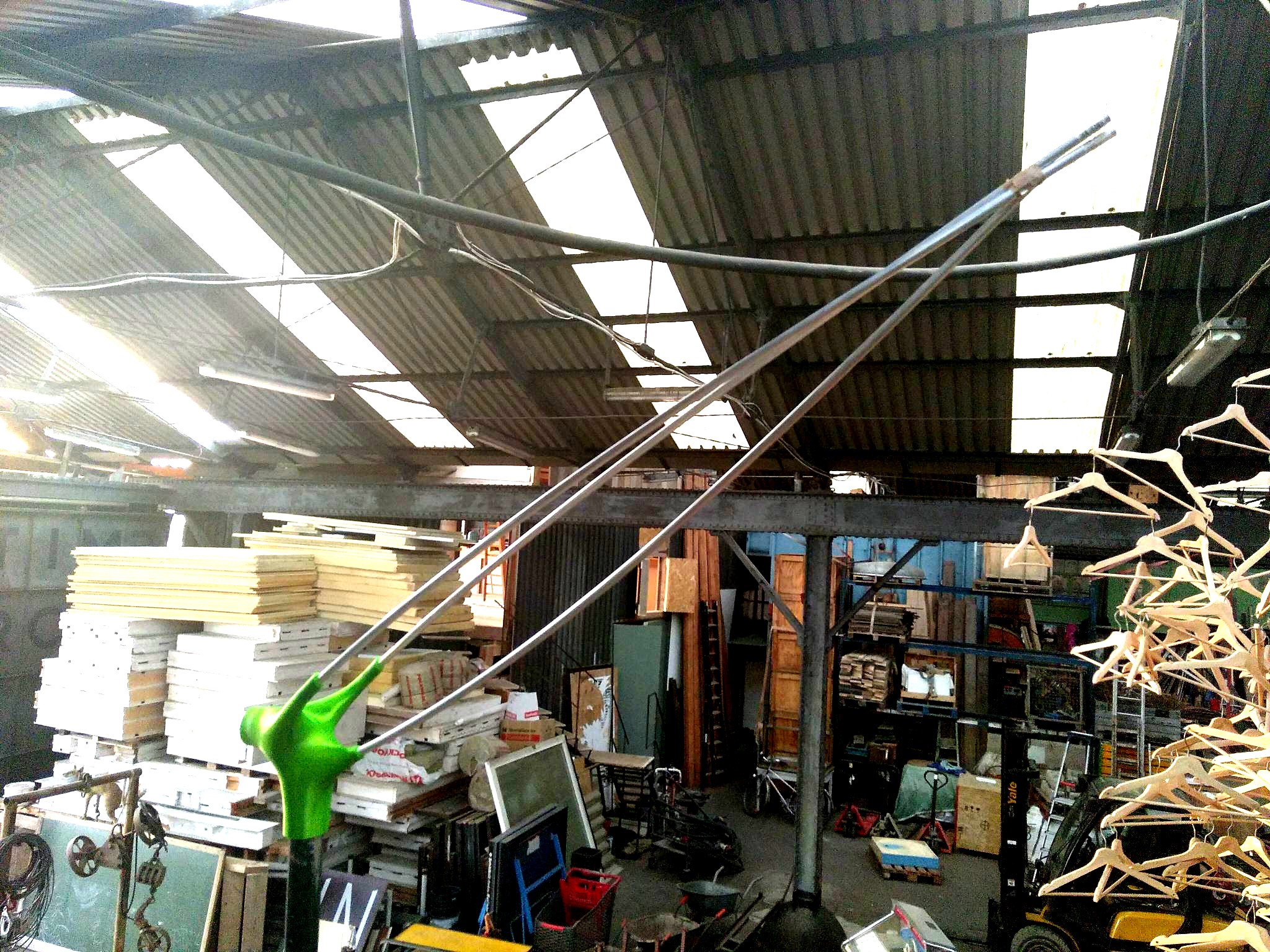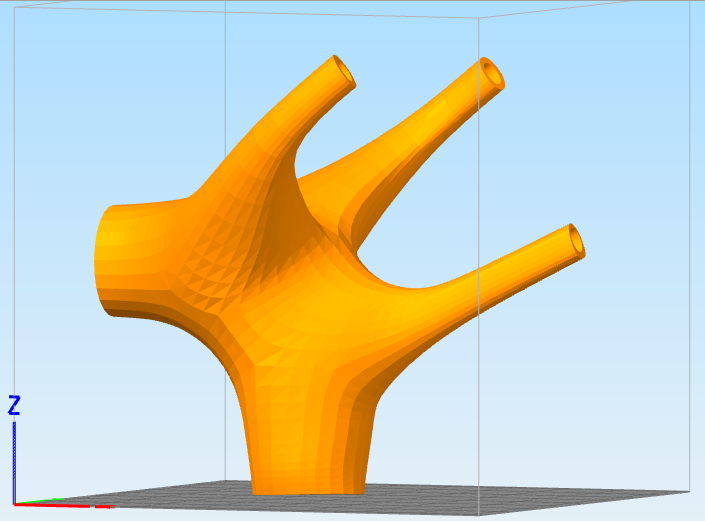-
Easy construction, a 12-year old can do it!
08/29/2020 at 16:35 • 0 commentsOne of our primary goals is making our windturbines very easy to assemble. Think an Ikea-style kit that everyone can build with basic tools. This also means omitting the use of resins, these are used for holding the magnets and coils into place. And for neodymium magnets it's very important to prevent contact with moisture, or this can happen:
![]()
We avoid using these because this kind of 2-component adhesives are not that easy to work with. ..You have to weigh the hardener precisely since you only need a few grammes, stir very very well and work fast when applying because it hardens quite fast.
We came up with a solution! Which is printing the magnets IN the part. This is done by putting the magnets in the caveties, and printing a 'lid' of 5 layers on top of it:
![]()
To test, we emerged the part in water for 24h and weighed it before and after:
![]()
The weight appears to be the same before and after, and no traces of water are visible in the part!
![]()
-
First test with rPET (recycled PET!)
08/25/2020 at 17:05 • 0 commentsOur BASF Ultrafuse rPET arrived! First tests are good: the results are similar as PET-G and it prints with the same settings. It's a bit stiffer though, but the difference is way smaller than between PET(-G) and PLA. BASF's rPET claims to have a flexural modulus of 2,15GPa, generic PET-G should be around 2,1GPa, and PLA around 3,5GPa. In scientific papers we can see that PET-G sometimes has a lower flexural modulus than specified, which would explain the difference in our tests.
The color seems to be a bit less bright than the official product photos. Certainly for small parts this is something to be aware of. Below is an example next to a red and a green PET-G part.
![]()
![]()
Original product picture from the BASF website:
![https://asset.conrad.com/media10/isa/160267/c1/-/nl/001969512PI00/image.jpg]() (Please not that we are not affiliated with any of the brands mentioned)
(Please not that we are not affiliated with any of the brands mentioned) -
Using PET's flex for a self-locking tail
08/24/2020 at 16:37 • 0 commentsWe aim to make the construction of the windturbine as easy as possible. This means a minimum of glue and screws. For the tail, we designed a piece that holds 3 aluminium rods and can be mounted on a 40mm pole. Since the rods and the PET flex a little, they will interlock because of the tension of bending the rods towards eachother:
![]()
![]() Test print, but gives a more detailed view:
Test print, but gives a more detailed view:![]()
-
Almost ready to fly!
08/18/2020 at 14:59 • 0 commentsThe Propel-E is coming together nicely! Until now we have been prototyping with PET-G, but for the final version we will switch to 100% recycled PET from Tridea en BASF!![]() Next up is creating a tail! Dimensions are not so critical but it is important that it is light and stiff! The tailpiece will also serve as a mount for the windturbine, and fits everything of a pole of 40mm. Herefore we use a cheap steel pole that is used for garden fencing (which was actually 38,5mm in our case). Total price: barely 20EUR!
Next up is creating a tail! Dimensions are not so critical but it is important that it is light and stiff! The tailpiece will also serve as a mount for the windturbine, and fits everything of a pole of 40mm. Herefore we use a cheap steel pole that is used for garden fencing (which was actually 38,5mm in our case). Total price: barely 20EUR!
Testprint:![]()
The final result will be the printed version of this:
![]()
Propel-E 50 | A powerful recycled windturbine
A windturbine made from PET-bottles! Completely 3D-printable and open-source.
 Bram Peirs @ FW2W
Bram Peirs @ FW2W





 (Please not that we are not affiliated with any of the brands mentioned)
(Please not that we are not affiliated with any of the brands mentioned)
 Test print, but gives a more detailed view:
Test print, but gives a more detailed view:
 Next up is creating a tail! Dimensions are not so critical but it is important that it is light and stiff! The tailpiece will also serve as a mount for the windturbine, and fits everything of a pole of 40mm. Herefore we use a cheap steel pole that is used for garden fencing (which was actually 38,5mm in our case). Total price: barely 20EUR!
Next up is creating a tail! Dimensions are not so critical but it is important that it is light and stiff! The tailpiece will also serve as a mount for the windturbine, and fits everything of a pole of 40mm. Herefore we use a cheap steel pole that is used for garden fencing (which was actually 38,5mm in our case). Total price: barely 20EUR!
